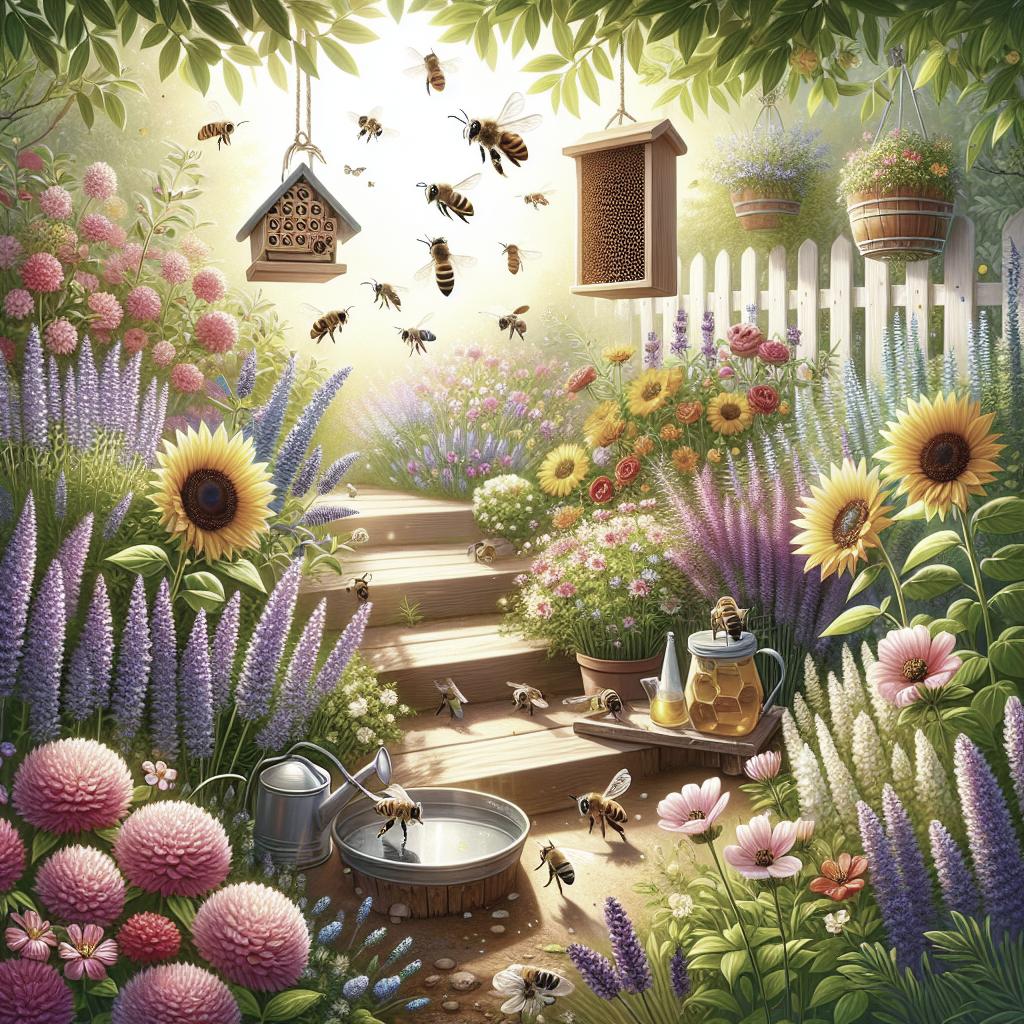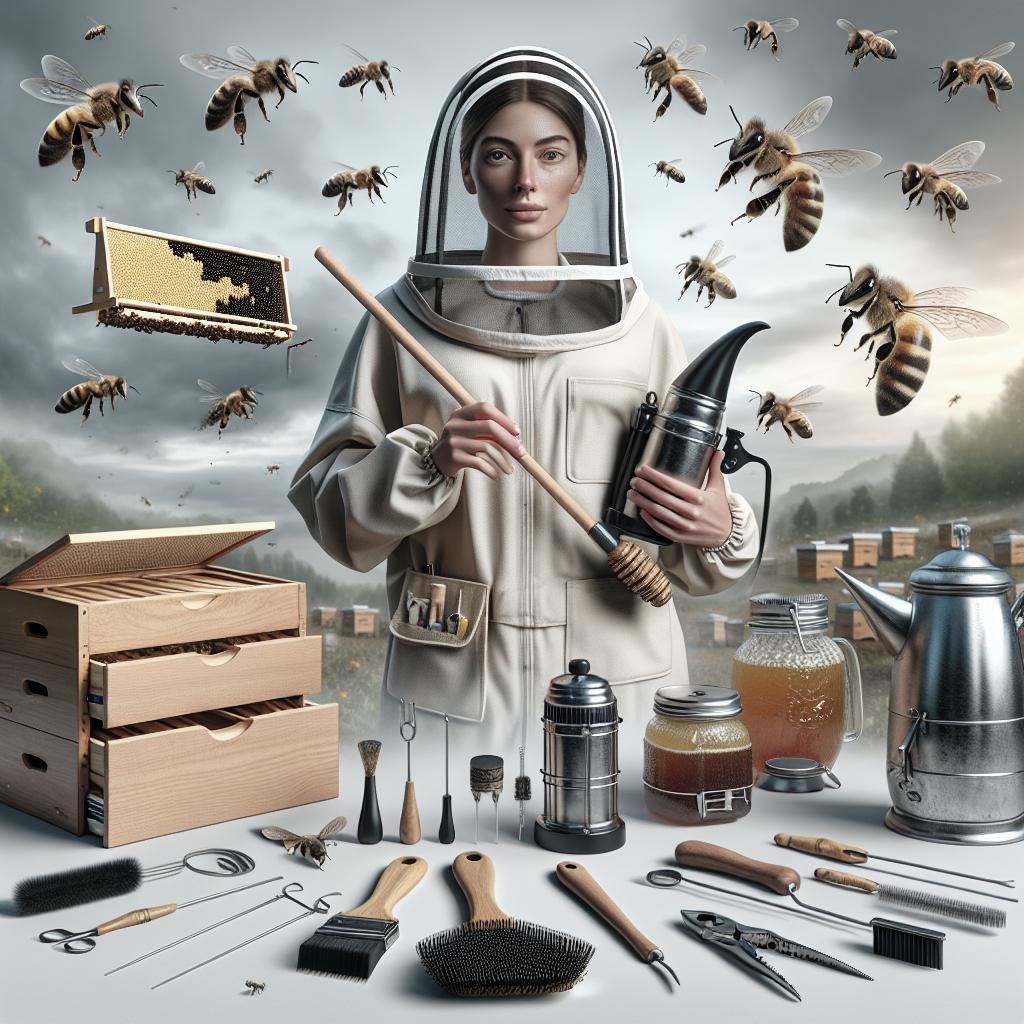How to Attract Bees to Your Garden
Our gardens thrive on biodiversity, and bees are vital contributors as they assist in pollination, leading to the production of fruits, vegetables, and vibrant flowers. Unfortunately, bee populations are declining, and our gardens can serve as refuges for these essential insects. This article will guide you through six practical tips to attract bees to your garden, discuss the benefits of having bees, and address frequently asked questions on the topic. Whether you’re a passionate gardener or just starting, integrating these strategies will benefit your green space and the broader ecosystem.
Related Stories
In recent years, the plight of bees in declining populations has gained widespread attention, highlighting an urgent need for bee conservation. Various gardening communities are advocating for creating bee-friendly environments and sharing their inspiring success stories. Join this positive movement by transforming your garden into a sanctuary for bees, contributing to their survival and the blooms in your neighborhood.
6 Tips to Attract Bees to Your Garden
1. Choose Bee-Friendly Plants
The first step to creating a bee-friendly garden is selecting the right plants. Bees are attracted to flowers rich in nectar and pollen. Opt for native plants, as these have evolved alongside local bee species, providing the best nutrition. Flowers such as lavender, sunflowers, and bluebells are excellent choices. Similarly, herbs like rosemary and thyme not only attract bees but also spice up your culinary endeavors.
Focusing on plant diversity will ensure a rich and continuous food supply for bees. It’s beneficial to consult local gardening experts or resources to identify the best species for your area, guaranteeing that your garden becomes a bustling bee paradise.
2. Plant a Variety of Flowers
Just like humans, bees enjoy variety. By planting a wide range of flowers that bloom at different times, you ensure that bees have access to food throughout the growing season. Early bloomers such as crocuses and late bloomers like asters can provide bees with nutrients from spring to fall.
Incorporating a mix of shapes, sizes, and colors will also appeal to different bee species with varying tongue lengths and color preferences. This biodiversity encourages a range of pollinators, enriching your garden’s ecosystem.
3. Arrange Flowers in Clumps
Bees tend to focus on flower patches rather than solitary blooms, as it makes foraging more efficient. Arrange your flowers in large clumps with the same species close together, roughly four feet in diameter. This clustering facilitates easy access for bees and increases the likelihood of successful pollination.
Consider creating groupings of flowers with similar blooming periods. Not only does it make the area attractive, but it also sends a clear signal to bees about available resources, making your garden a favored spot.
4. Provide Drinking Water
Bees, like all creatures, require water to thrive. Providing a safe source of water in your garden can attract bees and other beneficial insects. A shallow birdbath with stones or marbles that break the water’s surface can serve as a fantastic bee watering hole.
Ensure water sources are regularly refreshed to prevent the breeding of mosquitoes and algae growth. Bees appreciate a clean, reliable water source they can return to, establishing a beneficial pattern over time.
5. Create Bee Shelters
Beyond food and water, bees need safe spaces to rest and nest. Preserve small areas of undisturbed land where bumblebees and solitary bees can build their nests. Alternatively, you can purchase or craft bee hotels made from natural materials to encourage occupation.
It’s crucial to keep these shelters pesticide-free and place them appropriately, ensuring they receive morning sunlight while avoiding the harshest midday heat.
6. Limit Pesticide Use
Pesticides pose significant risks to bees, often leading to weakened health or death. Opt for natural pest control methods or plant varieties that repel pests to protect your plants without chemicals. If pesticides are necessary, apply them at night when bees are less active and choose formulations with minimal impact on pollinators.
Educating yourself on sustainable practices can help maintain a bee-friendly environment, increasing biodiversity and promoting healthy plant life. Remember, a slight cosmetic imperfection on a leaf is a fair trade-off for a vibrant ecosystem.
Benefits of Bees in Your Garden
Bees play a crucial role as pollinators, aiding in flowering plant reproduction and development. Including bees in your garden ecosystem drastically improves yields for fruit-bearing plants and flowers, enriching both the landscape and the harvest.
Beyond pollination, bees increase biodiversity, making your garden resilient to pests and diseases. By attracting bees, you actively contribute to their conservation and support the wider environment, reinforcing the interconnectedness of life.
FAQ About Attracting Bees
How do you attract bees to a vegetable garden?
To attract bees to a vegetable garden, integrate flowering herbs such as chives and basil among your vegetables. Install a water feature and minimize pesticide usage to create an inviting space for bees, ensuring they favor your crops for pollination.
Why are bees not coming to my garden?
A lack of bee activity may stem from the absence of bee-friendly plants or pesticide use. Analyze your garden’s offerings and adjust with appealing flowers in clumps and quality water sources. The location might also affect bees if it’s inaccessible or inhospitable.
Does sugar water attract bees?
While sugar water can attract bees temporarily, it isn’t a substitute for the natural nectar they require. Rely on blooming plants to provide the necessary nutrition for their health and longevity.
What kinds of bees sting?
Most bees, including honeybees and bumblebees, can sting, although they typically do so only in defense. Female bees possess stingers, whereas male bees, known as drones, do not. It’s always best to observe bees from a respectful distance.
How to Attract More Pollinators to Your Yard
Amy Adams
Amy Adams, a renowned horticulturist, emphasizes the importance of utilizing native plants and creating welcoming environments for all pollinators, including butterflies, hummingbirds, and bats. Integrating diverse plant species and maintaining healthy soil conditions are essential steps in this direction.
Why Lawn Love? Lawn Love Makes Lawn Care Easy
Instant Quotes
Lawn Love offers an efficient platform for lawn care, providing instant quotes tailored to your yard’s needs. It’s a breeze to ensure your garden is ready to host bees and other pollinators with their user-friendly services.
Full Service Lawn Care
Full-service lawn care means dedicated solutions for mowing, planting, and maintenance, so you spend more time enjoying your garden than tending to it. Lawn Love supports the harmony between aesthetic and ecological balance.
Final Thoughts
| Tip | Description |
|---|---|
| Choose Bee-Friendly Plants | Select native, nectar-rich plants that attract bees. |
| Plant a Variety of Flowers | Introduce a range of flowers with staggered blooming times. |
| Arrange Flowers in Clumps | Group flowers in patches to facilitate bee foraging. |
| Provide Drinking Water | Create a dependable water source to meet bees’ hydration needs. |
| Create Bee Shelters | Offer areas for nesting and rest, promoting bee habitation. |
| Limit Pesticide Use | Use alternative methods of pest control to protect bee health. |


